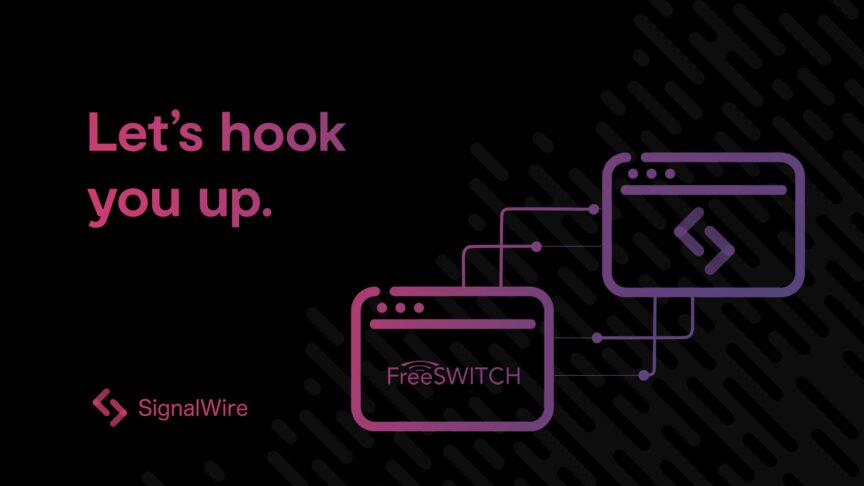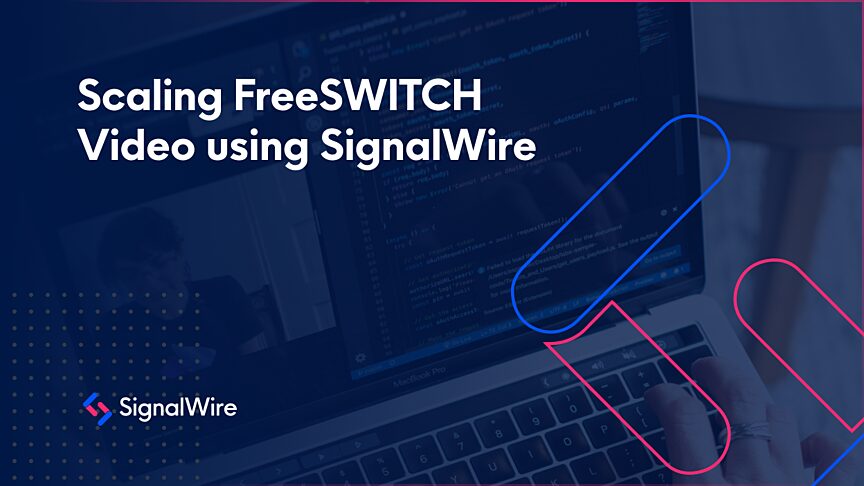The announcement of Metaswitch’s end-of-life has left many service providers facing critical decisions about the future of their communication infrastructure. Once a robust option for telecom solutions like Session Border Controllers (SBC), class 5 switches, and Unified Communications as a Service (UCaaS), Metaswitch is now winding down its support and development.
For years, Metaswitch has been a go-to provider for many telecom companies because of its flexibility. It allowed for solutions to be pieced out as standalone SBCs, deployed as a class 5 switch for voice services, or bundled together in a comprehensive UCaaS package. With the end-of-life announcement, many of these service providers are left searching for alternatives that can offer comparable features, flexibility, and—most importantly—ongoing support.
The impact of Metaswitch’s reduced support
Earlier in 2024, Metaswitch’s capacity to offer support was severely diminished. Microsoft, which acquired Metaswitch in 2020, has significantly reduced its workforce surrounding the platform, laying off large numbers of sales, engineering, and support staff. As a result, current users of Metaswitch products have experienced a noticeable drop in support.
Diminished support is not sustainable for long-term operations. Even though Metaswitch remains technically functional at this time, relying on an under-supported platform introduces risks like extended downtime and increased vulnerability to security threats.
Though they have not confirmed the details of why this is happening, the decision to wind down Metaswitch support appears to be part of Microsoft's broader strategy to pivot away from traditional telecom services in favor of a cloud-first approach. By reducing investment in Metaswitch, Microsoft can push users toward cloud-based alternatives like Microsoft Teams and Azure Communication Services.
While these platforms offer some appealing features, they come with significant challenges, especially for smaller organizations. By migrating to these platforms, service providers risk losing control of their customer relationships, becoming resellers of a larger platform, and diluting their brand identity.
For those who value brand autonomy, control over customer data, and the ability to innovate freely, now is the time for seeking alternatives.
FreeSWITCH as an SBC and class 5 Switch
Fortunately, there are other options. FreeSWITCH is an open-source solution that can effectively replace Metaswitch’s functionalities, and can act as an SBC or class 5 switch. Because FreeSWITCH is an open-source software solution, it allows developers to deploy at a fraction of the cost of proprietary alternatives.
Many companies already use FreeSWITCH as part of their communication stack, and those transitioning from Metaswitch can take advantage of extensive features, including VoIP, WebRTC, and telephony applications. FreeSWITCH’s flexibility is one of its biggest advantages, as developers can customize their deployments to suit their specific needs without worrying about high licensing fees or vendor-imposed restrictions.
FreeSWITCH can perform many SBC-like functions, such as routing, protocol conversion, and media management. When integrated with FreeSWITCH, other SBCs can help handle edge security, media handling, and SIP protocol management at a larger scale, while FreeSWITCH manages call processing and application features.
In environments with high security or scalability needs, especially for large carriers or enterprises, FreeSWITCH Advantage (FSA) can provide additional tools, support, and commercial modules that improve compatibility, stability, and performance when handling SBC requirements.
Setup and considerations
Leveraging FreeSWITCH's open-source capabilities reduces the need for costly, proprietary SBC solutions. Unlike some closed solutions, FreeSWITCH allows extensive customization, making it adaptable to unique use cases. It can integrate with existing telephony infrastructures, acting as a gateway between legacy systems and modern VoIP networks.
However, setting up FreeSWITCH as an SBC requires detailed configuration of its core modules, such as mod_sofia for SIP handling and modules for various codecs to handle media or transcode as necessary. You will need to customize the XML configuration files and dialplans or use scripting for advanced logic.
Large-scale deployments may require performance tuning, such as optimizing thread management and configuring FreeSWITCH's media handling parameters. Proper configuration of TLS for SIP signaling and SRTP for media ensures secure connections. It's essential to manage certificates and encryption keys for optimal security.
Overall, configuring FreeSWITCH as an SBC can be complex and requires knowledge of both FreeSWITCH and SIP protocol intricacies. Ongoing maintenance and security updates are necessary to ensure optimal performance and protection. Services like FSA or cloud solutions like SignalWire provide access to expert support and additional features needed for enterprise-level stability and security.
SignalWire for UCaaS
SignalWire is a programmable cloud communication platform that can provide UCaaS solutions with an emphasis on flexibility and scalability. Built on the foundations of FreeSWITCH, SignalWire enables developers to deliver voice, video, messaging, AI, and other communication services without the vendor lock-in that comes with proprietary systems.
For service providers needing to transition from Metaswitch’s UCaaS offering, SignalWire is an excellent alternative. It provides all the features telecom companies need, like call management, conferencing, and real-time communications, but with the added benefit of customization. This means you can tailor your offerings based on specific needs rather than being confined to the traditional limitations of UCaaS.
Additionally, building with SignalWire allows you to integrate AI into your tech stack—even if you're already using FreeSWITCH. This improves existing communication infrastructure by incorporating AI voice agents that can manage tasks like routing, basic troubleshooting, and other customer interactions. SignalWire's AI integration works smoothly on top of FreeSWITCH, providing low-latency responses and advanced features without the need to overhaul your current system.
Migrating to the cloud with SignalWire
Now is also an opportune time to move business communications to the cloud. Platforms like SignalWire can be effectively utilized in roles similar to those of an SBC or a class 5 switch, though with more flexibility and programmability.
Just like FreeSWITCH, SignalWire's programmable infrastructure allows service providers to create custom solutions—but in a quicker and simpler way. Whether replicating Metaswitch’s capabilities or innovating new features, SignalWire’s APIs and markup language (SWML) enable highly custom deployments without the complexity.
Built with enterprise-grade security, SignalWire ensures data protection and regulatory compliance. Horizontal scaling and cloud-native design allow it to grow alongside business needs, accommodating increasing call volumes without sacrificing performance.
SignalWire as an SBC and class 5 switch
SignalWire's platform is powered by its Call Fabric infrastructure, integrating with SIP, PSTN, and WebRTC protocols. This enables developers to create secure and interoperable SIP connections, manage call routing, and handle media streams, similar to SBCs that enable communication between different VoIP networks.
SignalWire's capabilities extend to offering traditional telephony features typical of class 5 switches. With tools like SWML and a suite of APIs, it supports features like call routing, IVR creation, and multiparty conferences.
Call Fabric’s programmable nature allows developers to establish rich call management functionalities like voicemail, call forwarding, and subscriber management. The platform is designed with ultra-low latency for voice and video, creating a high-quality communication experience even during peak hours.
Considerations when transitioning from Metaswitch
Transitioning to a platform like SignalWire or FreeSWITCH ensures that you retain control over your brand and customer relationships. You’ll have the flexibility to innovate, add features, and offer services that match your customers’ evolving demands.
When planning your migration away from Metaswitch, carefully consider:
Data migration: Migrating customer data and communication services from one platform to another requires careful planning. It’s important to ensure that your new platform can handle the complexity of your existing infrastructure and provide a smooth transition for your customers.
Compliance: Make sure that your new platform is compliant with all relevant regulations, particularly around data privacy and security. Platforms like SignalWire and FreeSWITCH are designed with security in mind, but you’ll need to ensure that your deployment meets the specific requirements of your industry.
Training and support: Moving to a new platform will require training for your staff. It’s important to choose a provider or partner that can offer ongoing support to help your team manage the transition and address any issues that arise.
The Metaswitch end-of-life doesn’t have to spell trouble for service providers who are willing to adapt. Transitioning to more flexible, open-source solutions like FreeSWITCH, or custom cloud solutions like SignalWire, can help you maintain services and prepare for future growth and innovation.
Metaswitch’s diminished support provides an opportunity to move toward platforms that better align with the future of communication. For those looking to stay competitive and keep their communication infrastructure modern, now is the time to explore alternatives to weather the Metaswitch end-of-life and emerge even better. The FreeSWITCH and SignalWire communities are here to help—join us on Slack, Discord, or our community forum.


